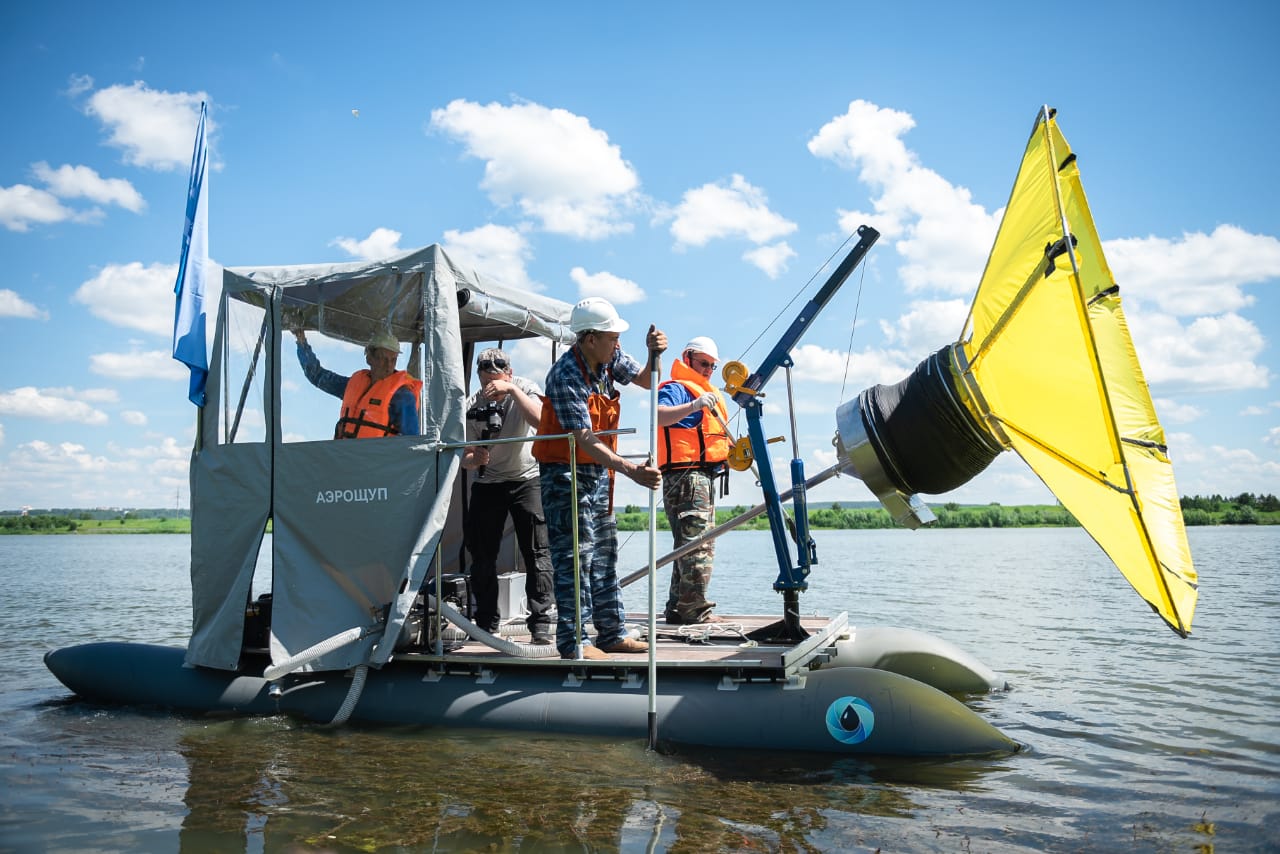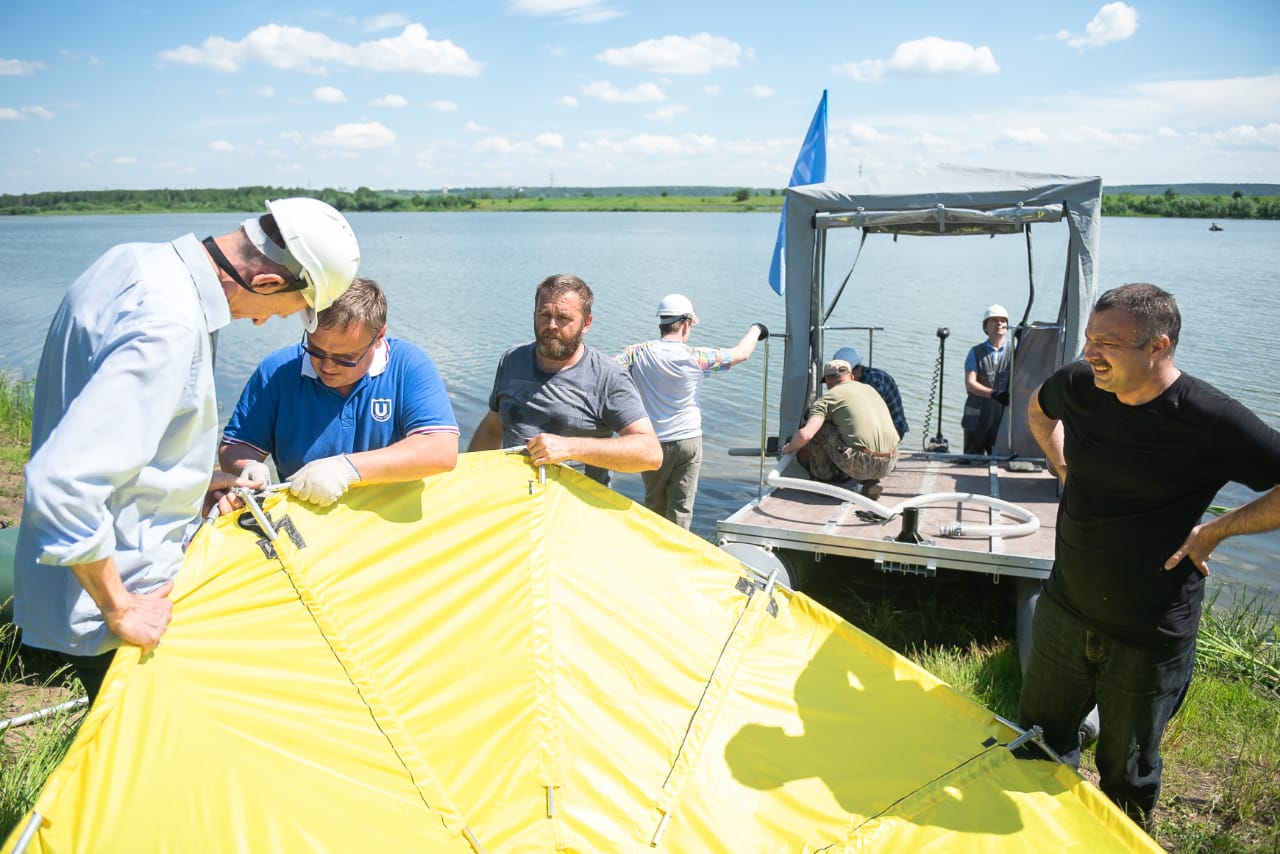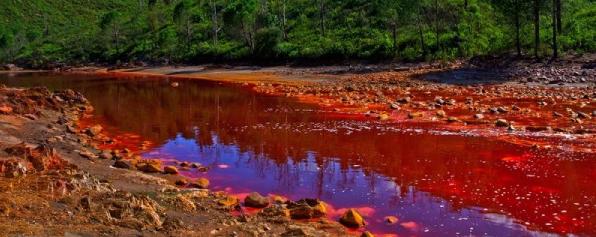The situation with the Norilsk oil spill has been declared a state of national emergency. Over 20,000 tons of diesel fuel leaked from a power plant storage into the Ambarnaya and Daldycan Rivers, whose waters turned red, making the surroundings look like a post-apocalyptic story’s illustration.
However, what is seen on the surface of the water is just one part of the problem. As surprising as it may seems, only a part of the spilled oil can be observed from the shore. Sometimes it is just 40 percent. Once in a reservoir, the oil is freed from light fractions and mineral particles adhering to it make it heavy, and it falls to the bottom. Thus, the surface may seem clean, but the river becomes a dead place with no life in it.
 This is the exact situation when the Aeroschup Project’s technologies from the TSU Institute of Biology can help with the cleanup. TSU has already sent a proposal on the removal of the pollution remains to Sergey Zhevachkin, Governor of the Tomsk Region, and to the Russian Ministry of National Resources and Environment.
This is the exact situation when the Aeroschup Project’s technologies from the TSU Institute of Biology can help with the cleanup. TSU has already sent a proposal on the removal of the pollution remains to Sergey Zhevachkin, Governor of the Tomsk Region, and to the Russian Ministry of National Resources and Environment.
It is necessary to emphasize that the Aeroschup Project contains over 20 technological developments that are capable of solving various environmental problems connected with water pollution.
The TSU experts divide the cleanup activity into three stages. The first vital stage is to collect the diesel in the moving layers of the water. “Aeroschup-Barrier” can help to do that by creating a strong air stream as some kind of an “air wall” across the river. This device has two functions: it brings the spilled oil on the surface and enriches the water with oxygen. The device can be assembled very quickly right on the spot. Its major advantage is that it can work under very low temperatures, when it is impossible to use oil sorbents. This characteristic is important when it concerns such Arctic places as Norilsk. 
The second stage is the evaluation of costs. It involves not the amount of the oil spilled, but various factors, such as the inaccessibility of the territory; certain climatic conditions; and, finally, the uniqueness of the ecosystem objects. Some time ago, TSU biologists received a patent for the method of calculating the mass of oil at the bottom of water bodies. This is the first Russian technique that allows doing that! The results of these calculations may differ from the traditional ones by tens of times. All of that influence the amount of money given on the environmental works.
The last stage is removing the diesel from the surface of the water, which is not a big challenge for the experts. It requires only times and physical efforts.
One may only hope that the Norilsk accident will make the Russian officials consider the need to equip the emergency services with the necessary technical devices. Oil companies should have those too in order to respond to accidents as promptly as possible. The TSU’s industrial partner Manotom manufactures the Aeroschup devices in Tomsk.
The Editorial Board of the blog appreciates the help from Danil Vorobyev, Doctor of Biology, Director of the TSU Institute of Biology
˃˃ next
